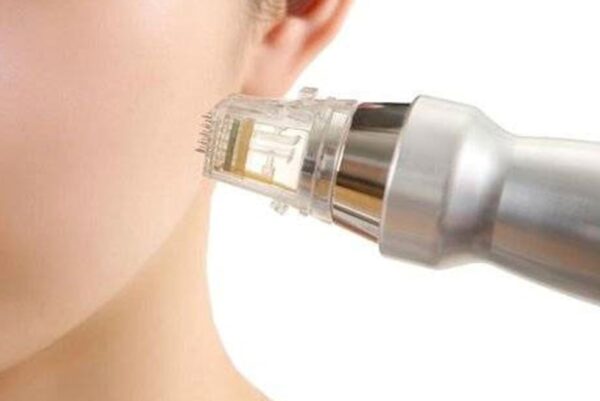


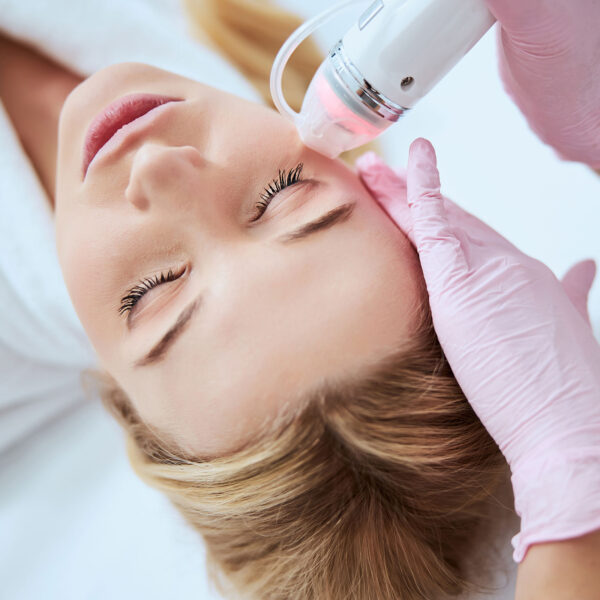
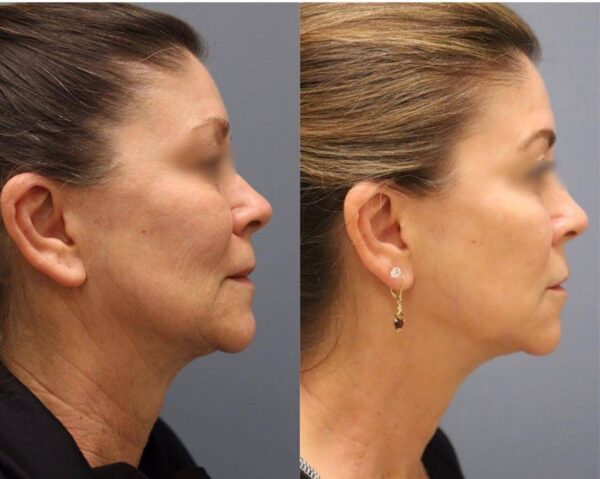
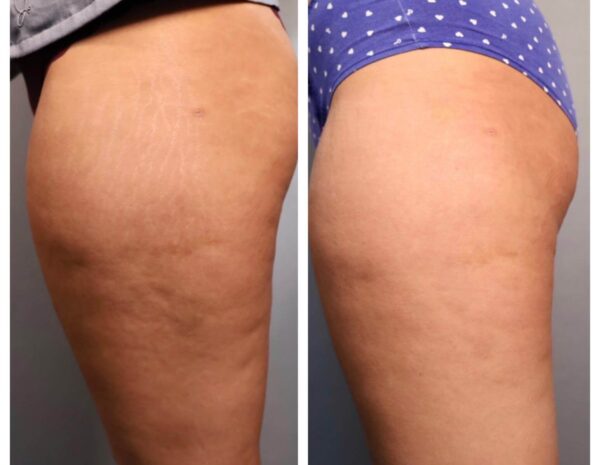
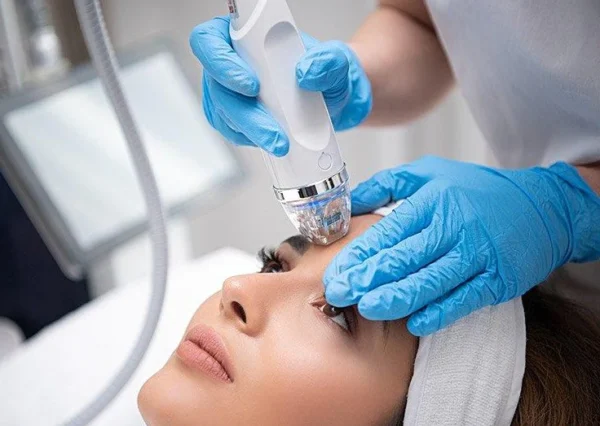
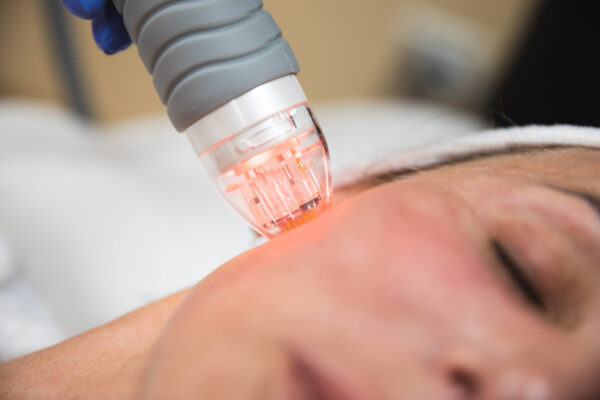
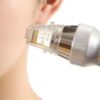


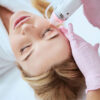
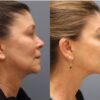
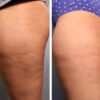
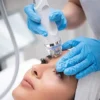
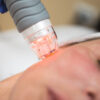

Free
Embark on a transformative journey with our exceptional range of medical treatments. As a leading medical tour operator, we offer a comprehensive selection of world-class treatments and procedures to address your unique healthcare needs. From advanced surgeries to cutting-edge therapies, our team of experienced professionals is dedicated to providing top-notch care and ensuring your comfort and satisfaction. Discover a new level of healthcare excellence with our tailored treatment options. Book now to start your journey towards a healthier and happier you.
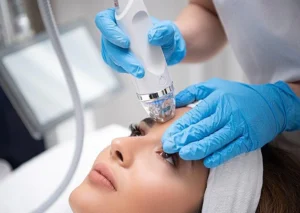 RF fractional treatment, also known as radiofrequency fractional treatment, is a non-surgical cosmetic procedure that uses radiofrequency energy to rejuvenate the skin by stimulating collagen production and tightening the tissues. The technique involves generating tiny micro-dermal wounds in the skin using heat energy delivered through a series of small pins. The placement of these pins is carefully controlled to ensure uniformity and precision in the treatment. By stimulating the body’s natural healing response and triggering the production of new collagen, RF fractional treatment can help improve the skin’s texture and tone, reduce the appearance of wrinkles and fine lines, and enhance the overall appearance of the skin. The procedure is minimally invasive and relatively painless, with little downtime needed for recovery. It is often used for facial rejuvenation, but can also be effective for treating other areas of the body that show signs of aging or damage.
RF fractional treatment, also known as radiofrequency fractional treatment, is a non-surgical cosmetic procedure that uses radiofrequency energy to rejuvenate the skin by stimulating collagen production and tightening the tissues. The technique involves generating tiny micro-dermal wounds in the skin using heat energy delivered through a series of small pins. The placement of these pins is carefully controlled to ensure uniformity and precision in the treatment. By stimulating the body’s natural healing response and triggering the production of new collagen, RF fractional treatment can help improve the skin’s texture and tone, reduce the appearance of wrinkles and fine lines, and enhance the overall appearance of the skin. The procedure is minimally invasive and relatively painless, with little downtime needed for recovery. It is often used for facial rejuvenation, but can also be effective for treating other areas of the body that show signs of aging or damage.RF fractional treatment is suitable for individuals who want to improve the appearance of their skin. It can be used to treat a variety of skin concerns, including fine lines and wrinkles, acne scars, sun damage, and uneven pigmentation. It is particularly effective for people with mild to moderate skin laxity, as it encourages collagen production and helps to tighten the skin.
RF fractional technology is not suitable for individuals with certain medical conditions or skin conditions. Those with pacemakers or other electronic implanted devices should avoid RF fractional treatments as it may interfere with the functionality of these devices. People with active skin infections, skin diseases, open wounds, or sunburned skin should also avoid RF fractional treatments as it can cause further skin damage and possible infection. Additionally, individuals with a history of skin cancer, or who have previously had radiation therapy, should consult with their physician before undergoing RF fractional treatments. Pregnant or breastfeeding women should also avoid RF fractional treatments as the long-term effects of the treatment on fetal or infant health are unknown. It is always recommended that you consult with a qualified and experienced healthcare professional to determine if RF fractional technology is appropriate for your individual situation.
Some advantages of RF fractional include:
Overall, RF fractional is a safe and effective way to achieve smoother, firmer, and more youthful-looking skin without undergoing more invasive procedures.
While it is generally safe and effective, there are potential complications associated with the procedure.
One of the most common complications is temporary redness, swelling, and discomfort in the treated area. Patients may also experience itching, peeling, or blistering. In rare cases, RF fractional can cause scarring, darkening or lightening of the skin, or infection.
It is important to note that these complications are relatively uncommon, and most patients experience only mild side effects. However, it is important to discuss any concerns with a qualified healthcare provider before undergoing any cosmetic procedure. Patients should also follow all post-procedure care instructions and avoid sun exposure and other potential irritants in the days and weeks following the procedure.
Before undergoing RF fractional treatment, it is important to take certain precautions to ensure optimal results and minimize the risk of any adverse effects. Patients should avoid direct exposure to sunlight or tanning beds for at least two weeks prior to treatment as it can make the skin more sensitive. It is also recommended to avoid any topical products containing retinoids or alpha hydroxy acids for at least a week prior to treatment. Patients should inform their doctor of any history of skin disorders, scarring, or current medications as they may affect the outcome of the procedure. Finally, it is important to follow any pre-procedure instructions given by the treating physician to maximize the benefits of RF fractional treatment. Overall, taking appropriate cares before RF fractional treatment can help minimize risks and ensure the best possible results.
Aftercare of RF fractional treatment is crucial to ensure the optimal results of the treatment and the safety of the patient. The following guidelines should be followed:
With proper aftercare, RF fractional treatment can provide noticeable improvements to the skin’s appearance with minimal side effects or downtime.
Only logged in customers who have purchased this product may leave a review.
Bipolar RF facial refers to a type of radiofrequency (RF) treatment that utilizes a handpiece with a bipolar electrode configuration. The RF energy is emitted through this handpiece, which creates changes in the electrical charges of the treated skin, generating heat in the tissue. The bipolar configuration means that there are two electrodes in the same applicator, allowing the energy to move from one electrode to the skin and back to the second electrode in the same handpiece 1 2.
The use of bipolar RF in facial treatments has been found to be effective, noninvasive, and easy to use. It has shown progressive improvement in the treated areas, with results that continue to be apparent several months after the last session. The duration of the achieved results is still being studied 1.
Bipolar RF facial treatments can be used for various purposes, including skin tightening, wrinkle reduction, scar treatment, and improvement of overall skin appearance. The treatment is typically performed in multiple sessions with intervals between them 3.
Based on the search results, bipolar RF facial treatments are generally considered safe and suitable for a wide range of individuals. However, it’s important to note that individual suitability may vary, and it’s best to consult with a qualified healthcare professional or dermatologist to determine if bipolar RF facial treatment is appropriate for your specific needs.
Bipolar RF facial treatments can be beneficial for:
Skin Tightening: Bipolar RF can help tighten the skin, improving the appearance of sagging skin and promoting a more youthful look.
Wrinkle Reduction: The treatment can target fine lines and wrinkles, helping to smooth and improve the texture of the skin.
Improvement of Skin Texture: Bipolar RF can enhance the overall texture and tone of the skin, making it appear smoother and more even.
Fine Line and Wrinkle Prevention: Bipolar RF treatments can also be used as a preventive measure to slow down the development of fine lines and wrinkles.
Non-Invasive Option: Bipolar RF facial treatments are a non-invasive alternative to surgical procedures, making them suitable for individuals who are not ready for more invasive treatments.
Based on the search results, bipolar RF facial treatments are generally considered safe and suitable for a wide range of individuals. However, there may be certain situations or conditions where it may not be suitable or require caution. Here are some factors to consider:
Pregnancy: It is generally recommended to avoid undergoing bipolar RF facial treatments during pregnancy due to the lack of research on its safety for pregnant individuals.
Open Wounds or Infections: If you have any open wounds, active infections, or skin conditions in the treatment area, it may be necessary to postpone the bipolar RF facial treatment until the skin has healed.
Metal Implants or Devices: If you have metal implants or devices in the treatment area, such as pacemakers or metal plates, it is important to inform your healthcare professional or dermatologist. They will assess whether the treatment is safe or if any precautions need to be taken.
Skin Sensitivity or Allergies: Individuals with highly sensitive skin or a history of allergic reactions may need to exercise caution or undergo a patch test before proceeding with bipolar RF facial treatments.
Recent Cosmetic Procedures: If you have recently undergone other cosmetic procedures, such as laser treatments or chemical peels, it is important to consult with your healthcare professional or dermatologist to determine the appropriate timing for bipolar RF facial treatments.
Medical Conditions: Certain medical conditions, such as autoimmune disorders or skin cancer, may require special consideration or consultation with a healthcare professional before undergoing bipolar RF facial treatments.
Here are some advantages of bipolar RF facial treatments:
Non-Invasive and Minimal Downtime: Bipolar RF facial treatments are non-invasive, meaning they do not require incisions or surgery. This makes them a popular choice for individuals who want to improve their skin without the need for extensive downtime or recovery.
Stimulates Collagen Production: Bipolar RF energy penetrates the deeper layers of the skin, stimulating collagen production. Collagen is a protein that provides structural support to the skin, and increased collagen production can lead to improved skin elasticity and firmness.
Tightens and Lifts the Skin: Bipolar RF energy heats the collagen fibers in the skin, causing them to contract and tighten. This tightening effect can help reduce the appearance of sagging skin and create a more lifted and youthful appearance.
Reduces Wrinkles and Fine Lines: By stimulating collagen production and improving skin elasticity, bipolar RF facial treatments can help reduce the appearance of wrinkles and fine lines, particularly in areas such as the forehead, around the eyes, and mouth.
Improves Skin Texture and Tone: Bipolar RF treatments can help improve the overall texture and tone of the skin by promoting cell turnover and reducing the appearance of uneven skin tone, roughness, and acne scars.
Safe for Different Skin Types: Bipolar RF facial treatments are generally safe for different skin types and tones, including individuals with darker skin tones who may be at a higher risk of pigmentation changes with other types of treatments.
Gradual and Long-Lasting Results: The results of bipolar RF facial treatments are gradual and continue to improve over time as collagen remodeling occurs. The effects can last for several months to a year, depending on individual factors and maintenance.
Complications of bipolar RF facial treatments are generally considered to be minimal. However, it’s important to note that individual experiences may vary. Here are some complications that have been mentioned in the search results:
Burns: Excessive energy delivery during bipolar RF treatments can potentially cause burns or areas of fibrosis. However, the risk of burns is much lower with bipolar RF due to constant temperature monitoring and improved techniques compared to previous technologies 1.
End Dermal Hits: An “end hit” or “end dermal hit” can occur when the tip of the internal probe is thrust into the dermis at a perpendicular angle during treatment. This can be avoided with proper technique 1.
Hardened Areas or Nodules: In rare cases, hardened areas or nodules may develop after bipolar RF treatments. These areas may represent fat necrosis, which is the death of fat cells. However, the occurrence of this complication is relatively low 1.
Based on the available search results, there is limited specific information regarding preoperative care for bipolar RF facial treatments. However, here are some general considerations that may be relevant:
Consultation: It is important to schedule a consultation with a qualified healthcare professional or dermatologist who specializes in bipolar RF facial treatments. During the consultation, they will assess your suitability for the treatment, discuss your goals and expectations, and provide personalized recommendations.
Medical History: Inform your healthcare professional about your medical history, including any underlying medical conditions, allergies, or previous cosmetic procedures. This information will help them determine if there are any contraindications or precautions to consider before the treatment.
Skin Preparation: Your healthcare professional may provide specific instructions on how to prepare your skin before the bipolar RF facial treatment. This may include avoiding certain skincare products or treatments in the days leading up to the procedure.
Medication and Supplement Review: Inform your healthcare professional about any medications or supplements you are currently taking. They will advise you on whether any adjustments need to be made before the treatment.
Sun Protection: It is generally recommended to protect your skin from excessive sun exposure before and after bipolar RF facial treatments. This may involve using sunscreen, wearing protective clothing, and avoiding prolonged sun exposure.
Avoid Blood Thinners: Your healthcare professional may advise you to avoid blood-thinning medications or supplements before the treatment to minimize the risk of bruising or bleeding.
Follow Preoperative Instructions: Your healthcare professional may provide specific preoperative instructions that are tailored to your individual needs. It is important to follow these instructions carefully to ensure the best possible outcome and minimize any potential risks.
Postoperative care for bipolar RF facial treatments may vary depending on the specific protocols and recommendations of the healthcare professional or dermatologist performing the procedure. While there is limited specific information available, here are some general considerations that may be relevant:
Follow Post-Treatment Instructions: It is important to carefully follow any post-treatment instructions provided by your healthcare professional. These instructions may include guidelines for skincare, wound care (if applicable), and any restrictions or limitations on activities.
Protect the Treated Area: After the procedure, it is typically recommended to protect the treated area from excessive sun exposure. This may involve using sunscreen, wearing protective clothing, and avoiding prolonged sun exposure.
Avoid Irritants: It is advisable to avoid using harsh skincare products, exfoliants, or other potential irritants on the treated area for a certain period of time as recommended by your healthcare professional.
Monitor for Complications: While complications are generally rare, it is important to monitor the treated area for any signs of infection, excessive redness, swelling, or other unexpected reactions. If you notice any concerning symptoms, it is important to contact your healthcare professional promptly.
Attend Follow-Up Appointments: Your healthcare professional may schedule follow-up appointments to assess your progress and ensure proper healing. It is important to attend these appointments as scheduled.
Maintain a Healthy Skincare Routine: Following the procedure, it is generally recommended to maintain a healthy skincare routine that includes gentle cleansing, moisturizing, and sun protection to support the healing process and optimize the results of the treatment.
There are no reviews yet.
Only logged in customers who have purchased this product may leave a review.
Choosing the right hospital and physician are important factors to consider that significantly influence a patient’s treatment. The preferred choice for many patients is choosing private care.
Choosing the right hospital and physician are important factors to consider that significantly influence a patient’s treatment.
Reviews
There are no reviews yet.